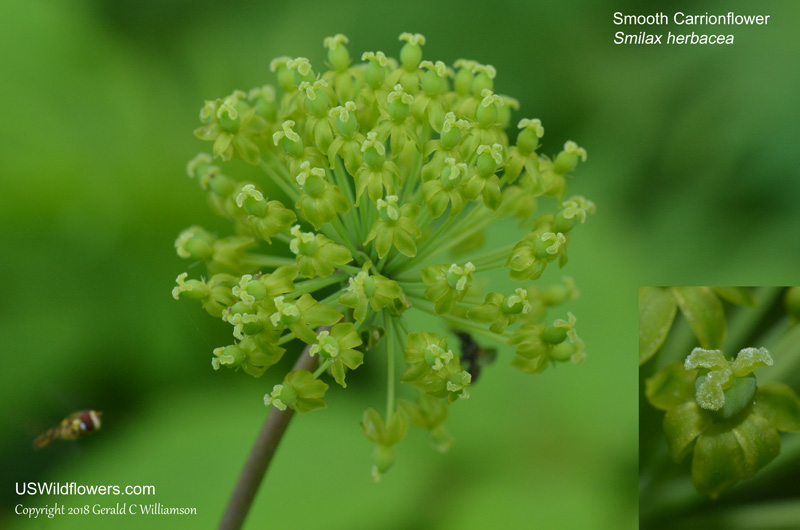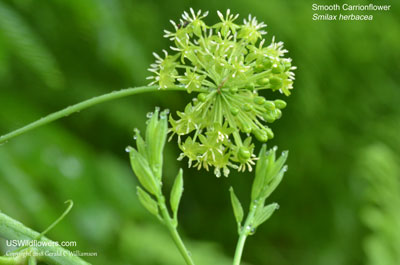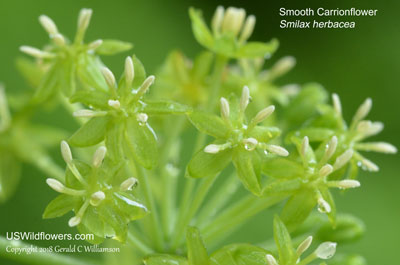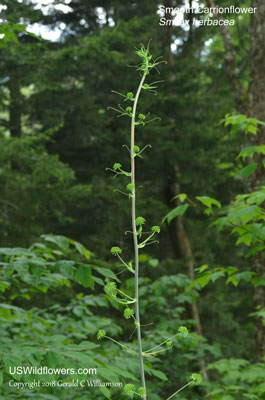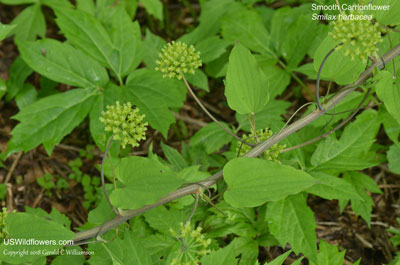Wildflowers of the United States | |||||||||||||
| |||||||||||||
Smilax herbacea - Smooth Carrionflower, Jacob's Ladder, Common Carrion-flower. | Smilax is a large genus of around 255 species, the only species in Smilacaceae since the genus Heterosmilax has been merged into Smilax. Plants in the genus occur around the world in temporate and tropical regions. All members of the family are dioecious - male and female flowers are on separate plants. Smilax herbacea is within the Nemexia section of Smilax, the herbaceous rather than woody plants in the genus, which also do not have stickers. This section of Smilax has an interesting history. Originally classified in Smilax (which was part of Liliaceae at the time,) in 1825 it was declared a separate genus named Nemexia by C.S. Rafinesque, based on the lack of prickles on the stems and the presence of staminodes on the pistillate flowers. In 1843 John Torrey determined that they should be instead placed back in Smilax, in a section he named Coprosmanthus. In 1850, shortly before his death, German botanist Carl Kunth elevated Coprosmanthus to species level. Starting with De Candolle in 1878, most authorities have rolled these species back into Smilax, although there is some disagreement on the division within that genus. While most seem to agree that a Nemexia / Coprosmanthus section is appropriate, even as recently as the late 20th century there is disagreement as to whether the section should be called Nemexia or Coprosmanthus. Smilax herbacea is a widely distributed plant, although the exact distribution is difficult to find. All authorities agree it is a plant of eastern North America (excluding Florida), with the distribution most concentrated along the Appalachian Mountains. The most authoritative sources seem to put the western end of its range well east of the Mississippi River, only as far west as Ohio south to Alabama, some including Indiana. Other authorities, such as the Native Plant Information Network and the USDA Plants Database (map to right) show it in several states west of the Mississippi River. While I have not been able to confirm, this is likely due to raising S. herbacea var. lasioneuron and var. pulverulenta to species level. The primary difference in those plants is relative length of the peduncle to the petiole, and puberance and color of the underside of the leaves. I have chosen to use the wider range of distribution on USWildflowers.com. Synonym: Nemexia herbacea. Found in: AL, AR, CT, DC, DE, GA, IA, IL, IN, KS, KY, LA, MA, MD, ME, MI, MN, MO, MS, NC, NH, NJ, NY, OH, OK, PA, RI, SC, TN, VA, VT, WI, WV, GS Leave comments on Smilax herbacea at this link.  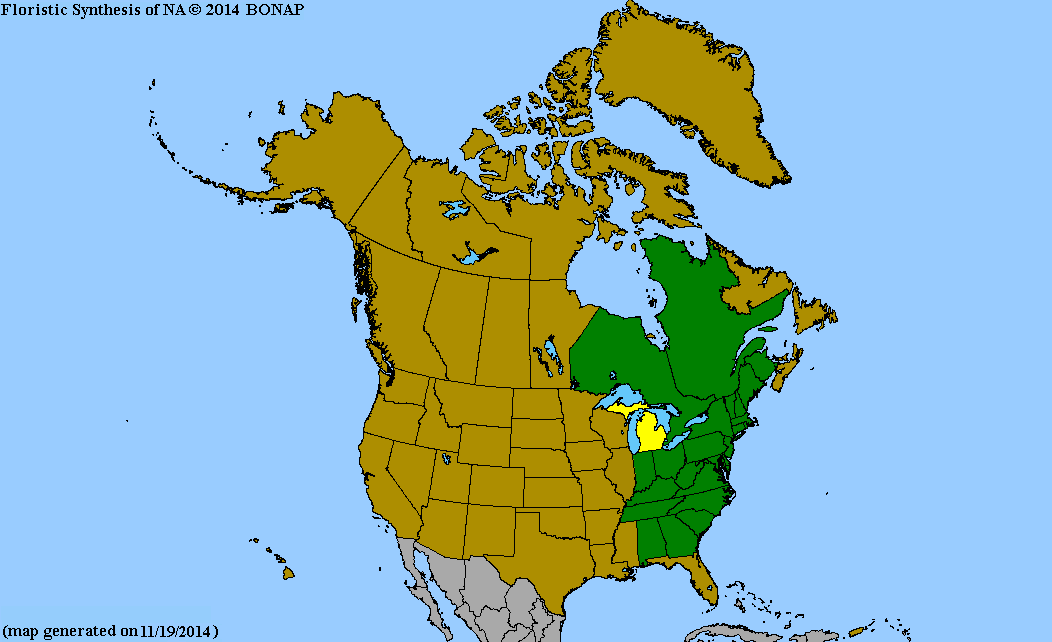 Map courtesy of The Biota of North America Program. Map color key Search Our Database: Enter any portion of the Scientific, Common Name, or both. Do a general Google search of the entire site: #ad #ad
| #ad
| | ||||||||||
|
Commercial / Cookie Notice Looking for Wildflowers for a specific state? Check here: | |||||||||||||
|
All content except USDA Plants Database map Copyright Gerald C. Williamson 2025 | |||||||||||||
Code Update 20230302

